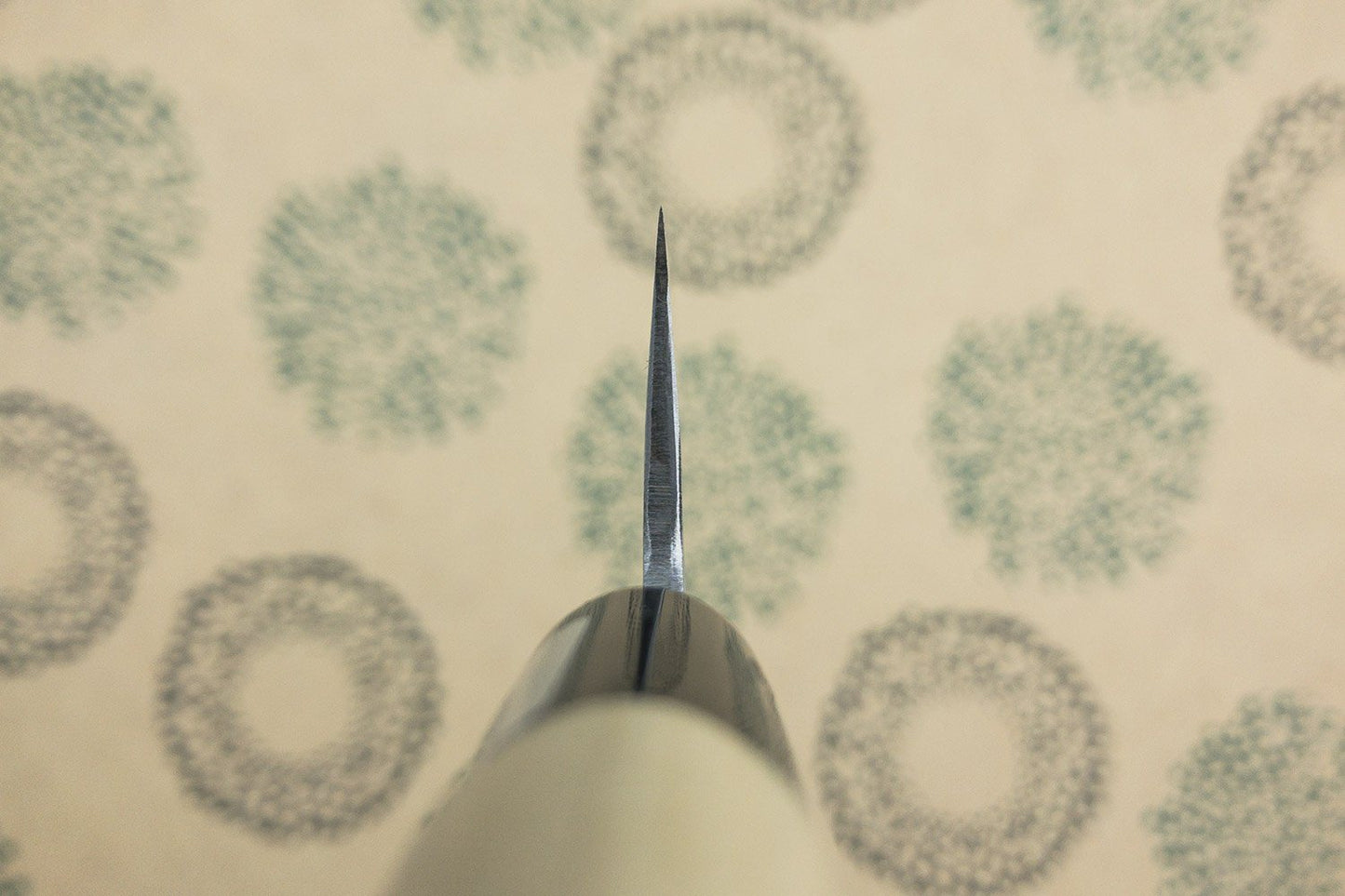Fujiwara Nashiji Petty 135mm
Fujiwara Nashiji Petty 135mm
Couldn't load pickup availability
This blade is made from Shirogami steel, called ‘white carbon’ in English, and while it requires care to avoid rust, it gets sharper than just about any other knife steel out there. The rough ‘nashiji’ finish is inspired by the skin of an Asian pear and shows off the hard work and care that goes into making his knives.
At Knifewear, saying “I own a Fujiwara” is basically a secret handshake that tells everyone you have fantastic taste in knives. The Fujiwara family started as blacksmiths in 1870, first forging farm tools, then swords. Today, their name is one of the most revered in the world of Japanese knives.
Fujiwara was one of the first to develop the technique of making a blade with a carbon steel core laminated with an outer layer of stainless steel for a high-performance knife with lower maintenance. He pushes his steel to its absolute limit of hardness, creating a blade that requires respect and care but stays sharp for a ridiculously long time.
About the Shape - This is the knife for smaller jobs that are done on a cutting board. Perfect for slicing shallots, cutting herbs, and boning smaller proteins. Additionally, Petty knives are an indispensable tool for those who feel uncomfortable wielding a larger chef knife.
| Shape | |
|---|---|
| Blade Length | | |
| Blade Height | |
| Blade Thickness Above Heel | |
| Weight | |
| Steel Type |
Rust Prone ⓘ
This knife can rust, click to learn more.
|
| Rockwell Hardness | 62 - 64 |
| Edge/Bevel | |
| Handle | Wa (Japanese) Handle - Oval Magnolia Plastic Collar |
| Knifeline | Fujiwara Nashiji |
| Blacksmith | Teruyasu Fujiwara |
| Made in | Tokyo, Japan |
Knife Care
Knife Care
Shipping and Returns
Shipping and Returns
We aim to ship your order within 1 business day at Knifewear, if there is a hold up, we'll aim to let you know and give you a timeline.
We offer $3 shipping on orders over $100* anywhere in Canada and $200* to customers in the USA. We ship worldwide, and offer up to the minute rates from our shipping partner DHL.
*Konro Grills and some other larger items are excluded from the free shipping offer.
How do I make a return on an online order?
No worries, we've got you sorted. Head over to https://knifewear.com/returns and follow the prompts.
Can I pick up my order Curbside / At the store?
Absolutely, as long as all the items you are looking for are in stock at the location you want to pickup from, you'll be able to select that at the checkout. If one or more items aren't at your preferred location we are happy to ship it to you.
Request Additional Info
Request Additional Info






